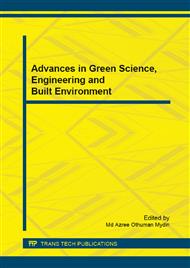p.109
p.123
p.127
p.132
p.136
p.141
p.145
p.149
p.153
Brigdeheader Space for Dwell in Jakarta
Abstract:
Bridgeheader is one of the typology of low-income people in the city who assume that the house is only ‘a springboard’ for their life in the city. This group of people dwelt not far from the location of their place to work; occupying marginal spaces in the city and its environment tend to be slump. Almost all areas in the city of Jakarta have marginal spaces, therefore the government attempt to improve the quality of their houses, for example by providing low-cost housing. In fact the low-cost house which was provided by the government failed to be ‘consumed’ by the brigdeheaders at the time when the used value of the house has been turned into market value. The research aimed to determine such approaches of use value of the house that can be ‘consumed’ by the brigdeheader, but did not undermine the space in the city. Data collection methods using practical observation conducted with interviews. While the analysis using descriptive pragmatic method in four case study area in Jakarta. The findings indicate that the concept of house for this group is not determined only by the ‘low price tag’ but also ‘the way of use’ of the space contributed with the result that the house can be ‘consumed’ well.
Info:
Periodical:
Pages:
136-140
Citation:
Online since:
March 2015
Authors:
Keywords:
Price:
Сopyright:
© 2015 Trans Tech Publications Ltd. All Rights Reserved
Share:
Citation:


